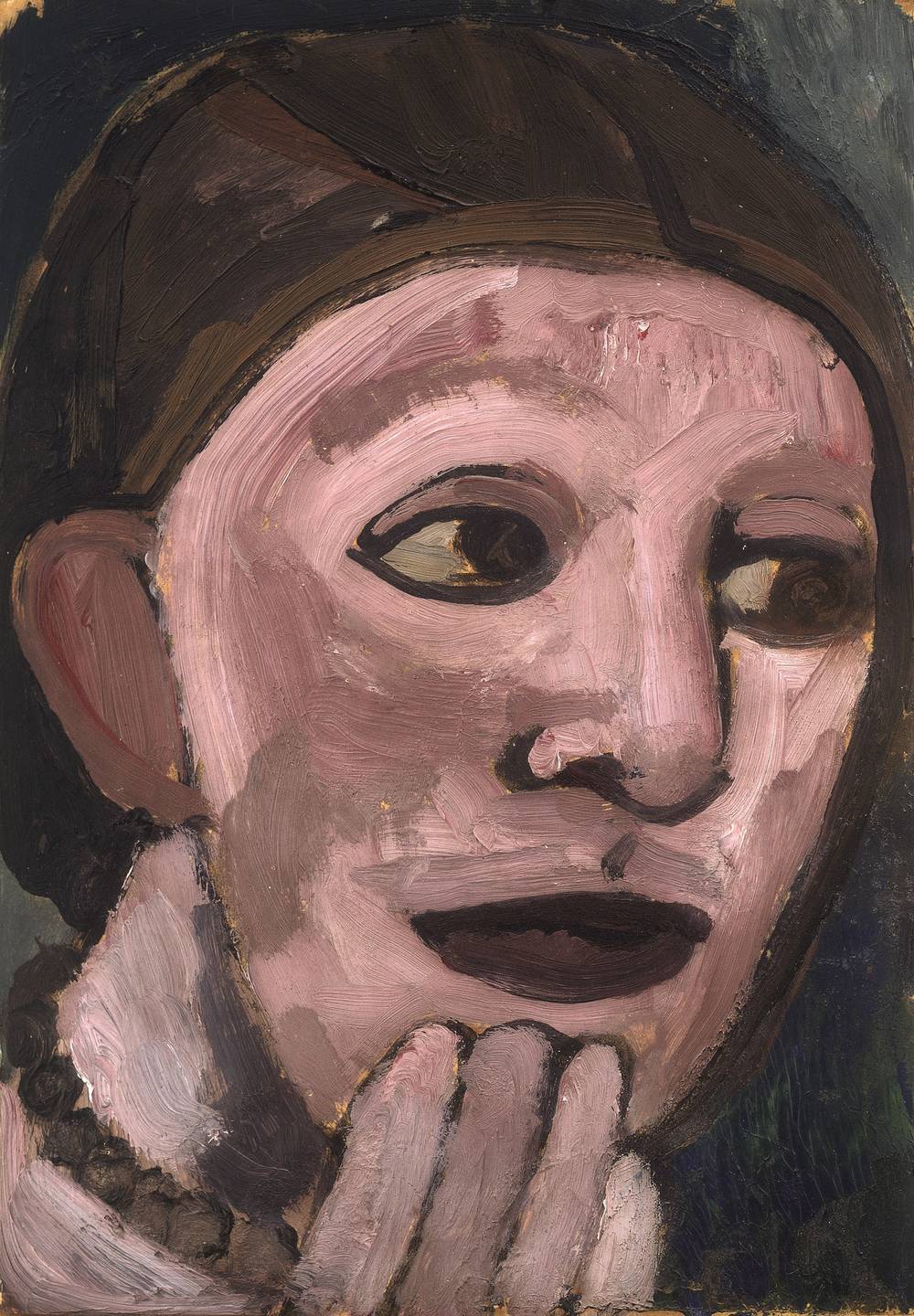Self-portraits offered Paula Modersohn-Becker space for artistic experimentation with form, color and technique. We took a closer look at how she explored the possibilities of painting.
“The great simplicity of form. That is something wonderful. I have always been at pains to lend the simplicity of nature to the head that I painted or drew. Now I have a deep sense of how I can learn from the busts of Classical Antiquity. How large and simply they were viewed! Forehead, eyes, mouth, nose, cheeks, chin that is all. It sounds so simple and yet it is so very, very much. How simply such a classical mouth is recorded in its surfaces. And then I feel how in drawing outdoors I must search for and find many strange forms and overlappings.”
In this diary entry dated February 25, 1903, Paula Modersohn-Becker not only expressed her personal take on a “simplicity of form” but also the emerging zeitgeist that was ultimately reflected in 20th-century art in its tendencies to abstract and simplify. In the field of portraiture this development went hand in hand with an increasing rejection of representation. If you examine the roughly 60 self-portraits Modersohn-Becker created, it becomes apparent that while with a few exceptions it is always possible to detect a similarity between the artist and her self-portrait this is not her prime concern. Self-portraits offered the artist greater scope for experimentation with shapes, colors and techniques – in other words they let her explore the opportunities offered by painting.
In “Self-Portrait, Half-Length Portrait with Brush in Raised Hand” dating from 1902 the artist appears in a semi-portrait brandishing a brush in her left hand and with her head slightly turned staring at us the viewers and her own reflection. Here, she resorts to a traditional means of depicting artists popular since the Renaissance where they were presented at work – we are familiar with this approach from the self-portraits of a Nicolas Poussin or Diego Velázquez. However, it is the only Modersohn-Becker self-portrait in which the artist presents herself in her profession through her painting utensils and also the only one in which she makes use of such a conventional form of depiction.
Forehead, eyes, mouth, nose, cheeks, chin that is all. It sounds so simple and yet it is so very, very much.

Paula Modersohn-Becker, Selbstbildnis, Brustbild mit Pinsel in der
erhobenen Hand, 1902, Image via www.kunsthalle-bielefeld.de
During her fourth and final longer stay in Paris in 1906-7 Paula Modersohn-Becker intensively explored the visualization of the “self”. The “Self-Portrait on my 6th Wedding Anniversary” (1906) created at this time is considered the first nude self-portrait of a female artist, was subject to numerous and varied interpretations, and became an icon of art history. Other self-portraits are far less known although they are likewise characterized by an innovative and experimental approach.
She was the first female artist to create a self-portrait in the nude
For example, im “Self-Portrait as a Standing Nude with Hat” (1906) Paula Modersohn-Becker presents herself as faceless and full-size nude. If you observe the work more closely you are immediately struck by the fact that the artist was primarily concerned here with formal and compositional experimentation: The hat with a brim, the head depicted front on, and the oranges in both hands and close to the similarly shaped breasts are composed as round elements in a vertical line. The top of the adjoining pubic region is so rounded that it takes up the shape of the oranges again. The triangular pubic region continues the vertical line down towards the legs that end in the feet, which are positioned roughly at right angles to one another. It seems as if the facelessness owes above all to the concentrated preoccupation with the geometric composition.
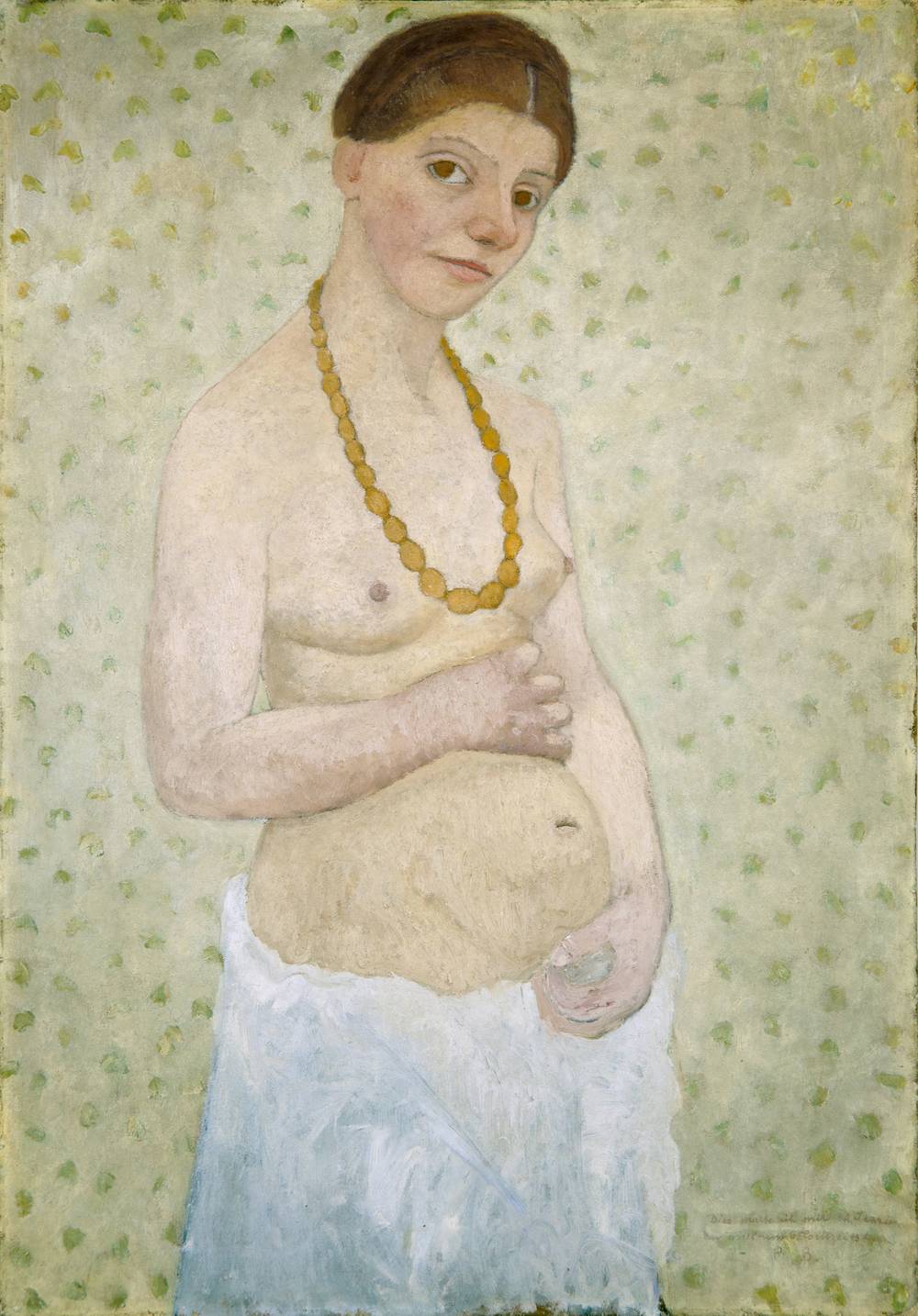
However, most of Modersohn-Becker’s self-portraits depict the artist close up with her face in focus. The “simplicity of form” quoted at the beginning and the importance of models from Classical Antiquity become apparent in a comparison between “Self-Portrait with Camellia Branch” (1906-7) and the Fayum “Portrait of a Young Woman” (100–130 A.D.). The two portraits are similar in format, detail and necklace but also in the frontality, the shape of the face, physiognomy and lack of pupils.
Depersonalizing, simplifying and generalizing
It is the depersonalizing, simplifying and generalizing depiction against a neutral background that leads in Modersohn-Becker’s works to the sense of timelessness that has so often been noted. It makes the individual diminish and emphasizes the universal, archetypical – a procedure that was at the time both radical and innovative. Moreover, the mask-like appearance typical for her late self-portraits in the “Self-Portrait with A Branch of Camellias” is expressed through the simplicity of form, a lack of pupils, and sharp outlines. Modersohn-Becker was not alone in her interest in mask-like faces – many avant-garde artists especially those located in Paris, including Picasso and Matisse, concerned themselves with masks and mask-like faces in the early 20th century.
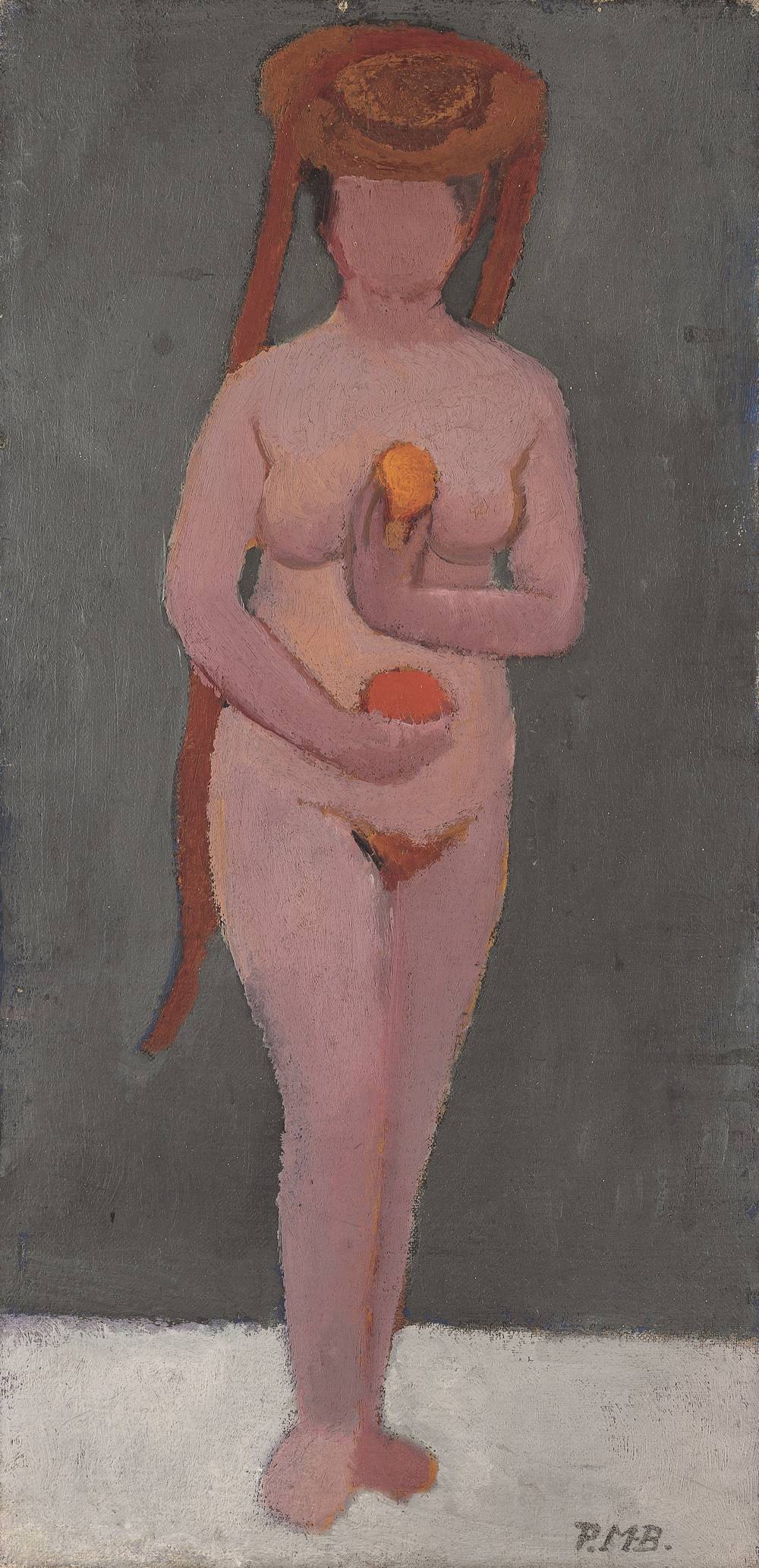
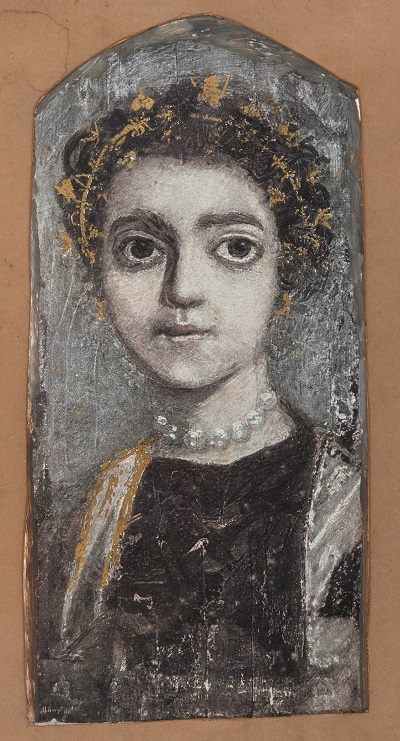
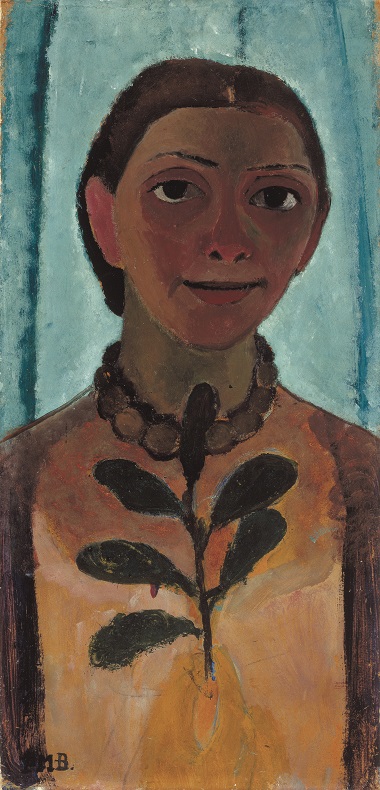
A really striking example by Modersohn-Becker is the “Self-Portrait Turned to the Right with Hand on Chin” (1906). The artist brings the viewer close in, while simultaneously turning away from us. She presents her face in a simplified and abstract way with large pupil-less eyes and striking black contours. And she applies the paint coarsely and thickly in contrasting areas of color. As in a few other self-portraits, too, she touches her face with her hand. By this gesture, she heightens the mask-like quality produced by this way of painting because it appears as if she is holding a mask in front of her face.
What are the possibilities of a painting?
Paula Modersohn-Becker’s self-portraits impressively demonstrate how innovative the artist was and how much she loved to experiment. She is less concerned with producing a reproduction or presenting herself as an artist but rather more with the options painting offers – a topic that especially preoccupied artists in the 20th century.
